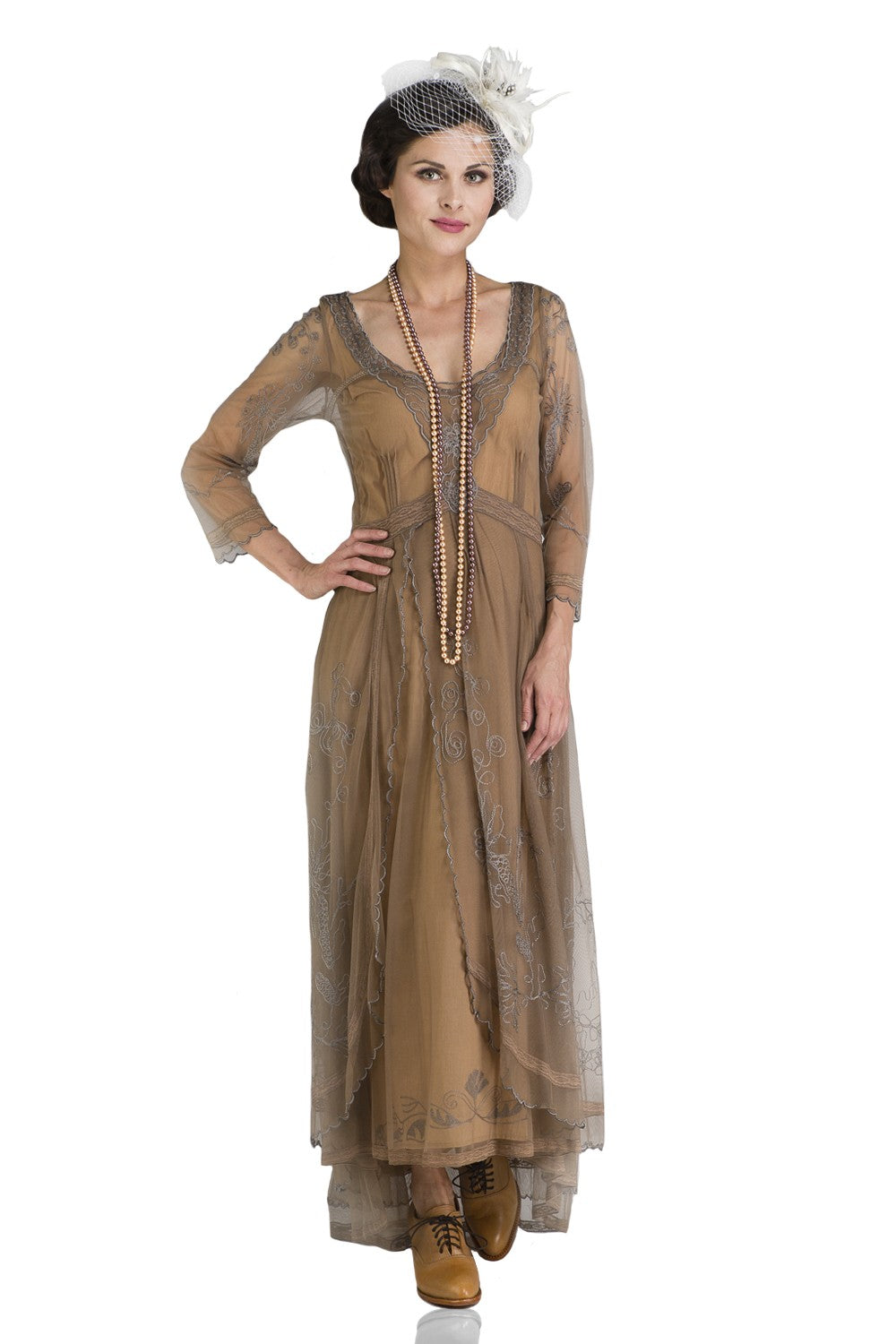Crochet and the Victorian Era Crocheting is an elaborate embroidery technique that very few modern women are skilled in. This special manner of knotting and looping yarn or other fine corded material with a hooked needle has become an old-fashioned art form. While we may think of crochet now as a trivial hobby, it was extremely influential in the lives of women around the globe during the 1800s. The importance of crochet in Victorian times is a fascinating chapter in the history of fashion.
How Crochet Came To Be
People were knitting textiles all over the world before the Victorian era. It wasn’t until the 1800s, however, that traditional crochet became popular among European women. An 1823 Dutch magazine entitled “Penélopé” is said to be the first place where crochet instructions were published for the masses. This magazine shared how women could create
colorful purses by using silk threads and a wooden tambour needle. Eventually, “Shepherd’s Crook” needles fashioned from ivory, wood, or bone would replace tambour needles when it came to creating crochet. It was a woman named Eleonore Riego de la Branchardière who truly revolutionized the way the world thought about crochet. Known as “The Mother of Modern Crochet,” she took elaborate
lace designs and re-created them with inexpensive materials. She eventually published a book in 1846 entitled "Knitting, Crochet and Netting,” which shared her intricate crochet patterns with other women. At the time, decorative lace was incredibly expensive. These crochet patterns, however, allowed lower class women to achieve the same look at a much more affordable price.
Irish Crochet
While crochet was prevalent in much of the Western world during the Victorian era, it was especially valued in Ireland. Between 1845 and 1850, Ireland suffered from what would eventually be known as the Potato Famine. During this period, many Irish people lived in extreme poverty. To support themselves and their families, women and girls turned to Eleonore Riego de la Branchardière’s book so they could create and sell beautiful lace-like designs to fashionable women in other parts of Europe. This skill helped many families survive during this bleak period.
The Importance of Crochet Work
In the late 1800s, crocheting became an incredibly popular pastime among women. Victorian women were never lazy and often busied idle hands with sewing or needle work. The types of sewing women did during the Victorian era fell under two categories. There was “plain” sewing (which included mending old or tattered garments) and “fancy” sewing, which included elaborate embroidery and crochet. It became so popular among the masses that ladies magazines published many volumes that included patterns for crochet corsets, garters, purses, capes, doilies, and other desirable garments and accessories. This popular practice didn’t just keep women busy - it also allowed them to create elaborate items that they could never otherwise afford. Victorian women prided themselves on their ability to create fancy crocheted patterns and garments. In a time when women were allowed very little personal freedom, many were able to create, sell, and profit from crochet. An issue of Harper’s Bazaar from 1873 even shared a story about a widowed woman who was able to support herself and her family thanks to her “swift crochet needle.” Just like in Ireland, crochet was a means of independence and survival for many Victorian women.
Karen is a skilled copywriter with experience in multiple niches, including fashion, digital marketing, and tech. She has a passion for crafting compelling content that informs and inspires. When she’s not writing, she enjoys reading, playing with her dog, and gardening.





















Leave a comment